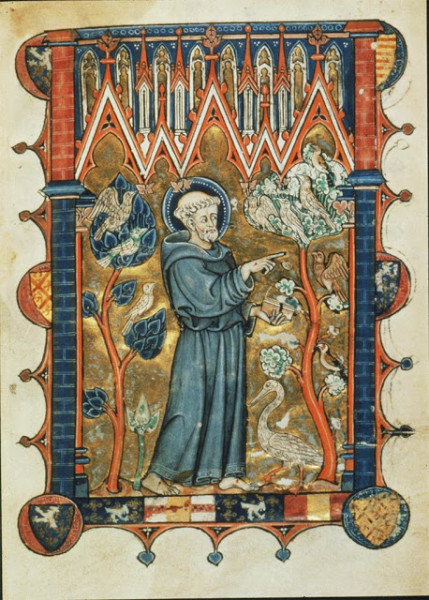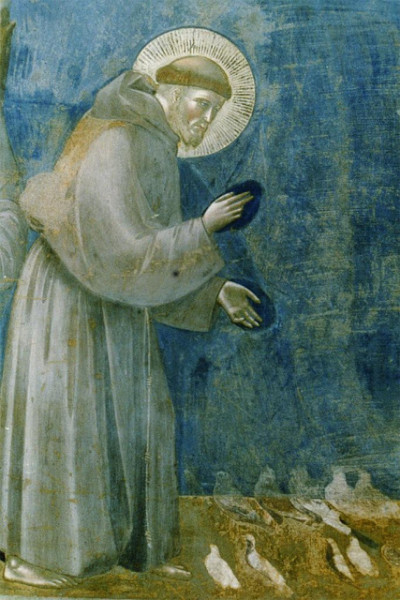Last week, a new pope was selected from among his cardinal colleagues. He is the first Jesuit to assume the position, the first pope from Latin America, and the first to choose Francis as his papal name.
Saint Francis, namesake to former Cardinal Jorge Mario Bergoglio of Argentina, is something of an anomaly in the Roman Catholic tradition. Born the son of a wealthy cloth merchant in the central Italian town of Assisi in the late twelfth century, Francis was an ambitious young man. But while convalescing from wounds incurred in battle, he experienced a religious revelation and gave up his worldly aspirations to lead a life of material poverty.
Francis, however devout, was also a quiet revolutionary. For centuries, the Church had taught a strict separation between man and nature, perpetuating the ancient Greek philosopher Plato’s ideas about the division between the divine soul and the material body. Theologians who supported this duality drew especially on words from the Book of Genesis in the Old Testament. We read there that after the purging flood that wiped out all but pairs of each animal from the earth, God created his covenant with the surviving Noah. God’s words to Noah and his sons from Genesis 9:1-3 command with assurance, “Be fertile and multiply and fill the earth. Dread fear of you shall come upon all the animals of the earth and all the birds of the air, upon all the creatures that move about on the ground and all the fishes of the sea; into your power they are delivered. Every creature that is alive shall be yours to eat; I give them all to you as I did the green plants.”
Francis, however, had other ideas. There are many anecdotes of his attention to the natural world, his sensitivity to and kinship with animals. One relates how he removed a thorn from the paw of a wolf who had been terrorizing the town of Gubbio, near Assisi. Releasing him from his pain, Francis convinced the wolf to abandon his aggression in exchange for food from the town. Other tales tell of Francis rescuing a lowly worm and also a fish. The best-known and most represented story, though, is his preaching to the birds.

Psalter and Book of Hours of Yolande de Soissons: ms. 729, fol. 2: “Saint Francis Preaching to the Birds,” c. 1290. Image courtesy of Artstor.
In a late thirteenth-century illuminated manuscript from Amiens, France, Francis is tightly framed by swaying trees that respond to his own bending form. On their branches, birds gather and face him. With its resplendent gold background, pointed Gothic arches overhead, columns and brick walls, and crests all around, the image is all stylized sumptuousness. All the essential characters are assembled, but the rich materials and intricate style belie the saint’s simple message.

Detail of Giotto’s c. 1290 fresco Sermon to the Birds, Upper Church of San Francesco, Assisi, Italy. Image courtesy of Artstor.
At almost exactly the same time that this lavish psalter was made, a far different image of the saint was painted on the wall of the San Francesco Upper Church in Assisi. Commonly ascribed to the Florentine artist Giotto di Bondone, the image is humble in comparison to the illuminated manuscript. What it lacks in sumptuousness, it makes up for in its careful attention to the modeling of Saint Francis’s body and his sensitive feet and hands. A flock of small white birds, some now vanishing from our sight after years and years exposed on the church wall, gather closely near his soiled feet. In a painting from a few years later, now at the Louvre Museum and also attributed to Giotto, Saint Francis is again rendered with an outstretched hand and a kind face. Here, a diverse assembly of recognizable fowl congregates to hear the saint’s words. Even the tree on the right seems to lean in to be closer. The ground is gold with detailed punchwork, but the material does not detract from Giotto’s emphasis on fellowship and mutual attentiveness.

Giott’s Saint Francis Preaching to the Birds, predella painting of tempera on poplar with gold ground, c. 1295-1300. Image courtesy of Artstor.
These last weeks, a persistent woodpecker, a red-breasted sapsucker, I think, has used the metal cap of the light pole at the end of our block to issue forth a resonant tattoo. My housemates and I first mistook the knocking for early-morning construction, but we’ve now identified the drummer and learned that he is declaring his territorial and mating rights. The message is not directly for us, of course, but we are mostly, depending on the hour he starts his practice, the glad recipients of this harbinger of seasonal change.
The modern Catholic Church can so often seem antiquated if not categorically unfeeling to the needs of our contemporary world. But I am cheered that for his moniker, Pope Francis has remembered and called forth a man whom at least history and art remember as a gentle figure with bare feet in the dirt and arms and voice extended in conversation with the birds.